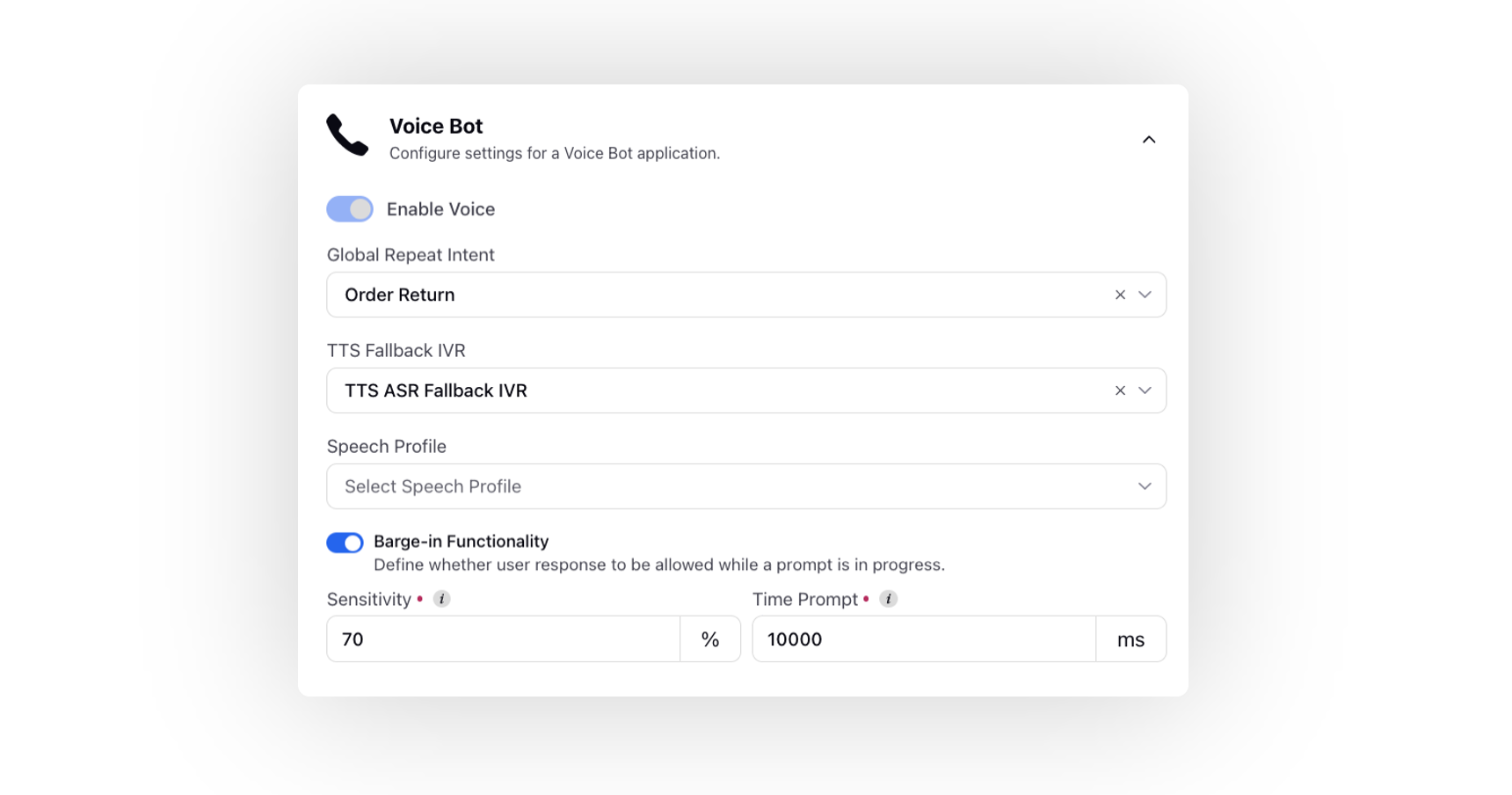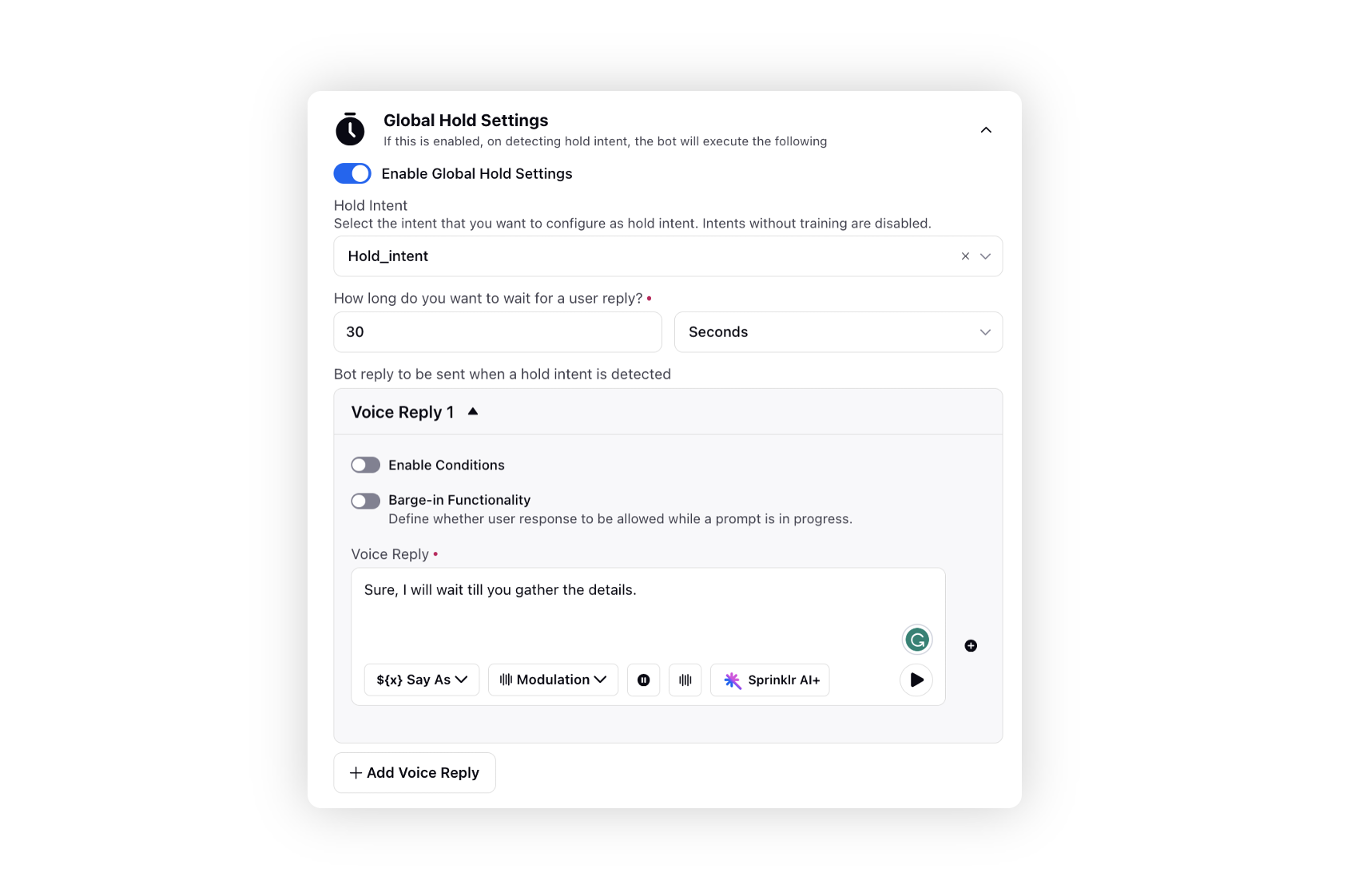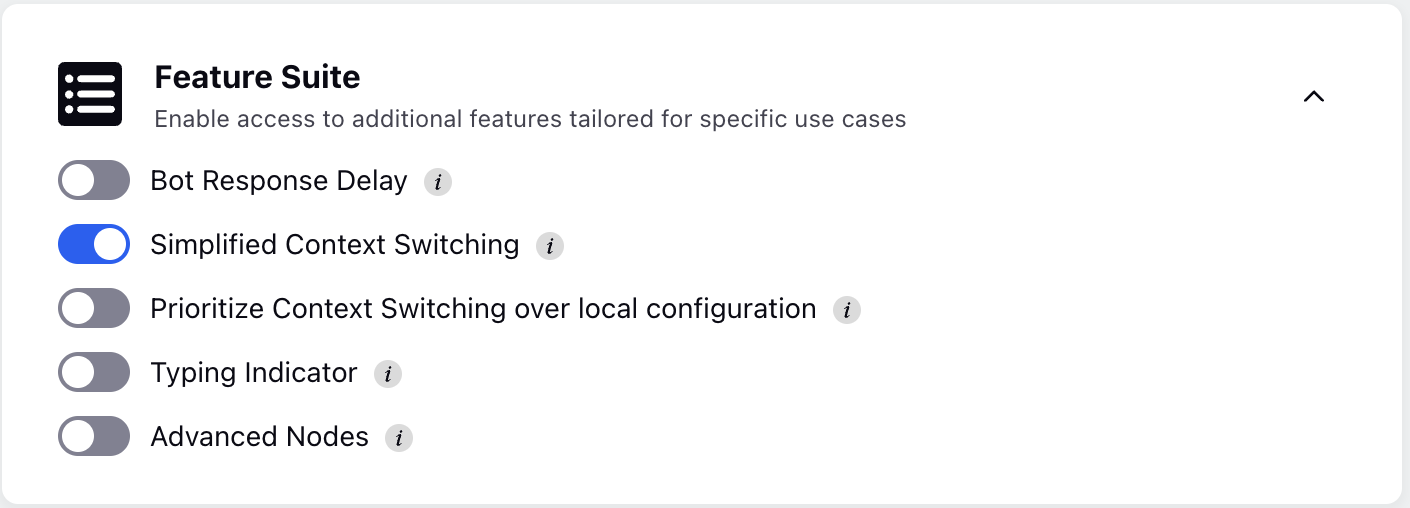Conversational AI - Admin Panel and Toggles
Updated
Overview
Configure various settings for your conversation AI application.
Timeout Settings
The timeout happens when a user does not respond for a specified duration. Using Timeout Settings, you can handle the scenarios by reminding them that you are expecting a reply or take some specific actions. For more information, see Global Timeout Settings.
Fallback Settings
A global fallback setting is important in such cases when the user's response does not match any of the expected answers and there is no local fallback set. With a fallback, the bot can provide a default response or ask the user to rephrase their answer. For more information, see Global Fallback Settings.
Voice Bot
Configure settings for a Voice Bot application.
Global Repeat Intent - Add intent, and if the bot detects this intent, it'll repeat its previous prompt.
TTS Fallback IVR - Select the workflow to trigger in case of text-to-speech engine downtime/failures.
Speech Profile - Select the speech profile for your voicebot.
Barge-in Functionality - You have the flexibility to determine whether user responses should be allowed while a voice prompt is playing. Additionally, you can specify the minimum percentage of completion for the bot reply before user responses are accepted. Furthermore, you can set a minimum time duration for the bot reply, after which user responses will be permitted. In all these cases, the system will consider the maximum value specified.
Note that if a bot reply node has a local barge-in set up, it will take priority over the global barge-in settings.

Trigger Application without Rule Setup
Choose the Live Chat application on which you want to activate this bot. No rule configuration is needed for this setup.

Global Hold Settings
This feature enhances your voicebot's capabilities by allowing it to respond intelligently when a user expresses the intent to put the conversation on hold. When the voicebot detects the "hold" intent, it will provide a reassuring message to the user and remain on hold for a predetermined amount of time, providing the user with the opportunity to gather the required information or handle other tasks.
To set up this feature, choose the intent you wish to configure as the hold intent, specify the duration for which the system should wait for a user reply, and define the voice bot reply to be sent when a hold intent is detected.

Feature Suite
You can enable access to additional features for targeted use cases using the toggle options under feature suite including :
Bot Response Delay - Enable this option to introduce a 1-5 second delay for all bot responses throughout dialogue trees, ensuring a more natural conversational flow.
Simplified Context Switching- Enable this feature to transition between different dialogue trees upon detecting a new issue type. For more information, see Simplified Context Switching.
Prioritize Context Switching over local configuration- Enable this option to prioritize Context Switching over local fallback options within any Dialogue Tree. The recommended setting fot this feature is OFF.
Typing indicator- Enable this option to display a typing indicator for the bot.
Advanced nodes- Enable this option to access advanced nodes, unlocking additional functionalities for specialized use cases.

Additional Settings
Advanced Modules - Enable this option to unlock advanced modules in the manage section. Recommended for specific use cases.
Golden Test Sets for ML Models - Enable this functionality to start viewing the Golden Test Set module in Intent Models. Recommended for advanced Intent model testing.
Reporting & Conversation - Enable this feature to quickly access metrics on the home page and review previous cases within the conversation pane.
Save as Draft for Dialogue Trees - Enable this option to save changes in the canvas as a draft without affecting the live deployment.
